Free Walking Tours are an employment opportunity for many educated Poles who guide tourists through Poland’s major cities like Warsaw, Krakow and Gdansk. There is generally a choice of several different kinds of tours with regular scheduled starting times and meeting places posted online.
Most walking tours are available by simply showing up at the tour schedule time in the appointed meeting place. They are free, although the guides work for tips and appreciate tourists who stay to the end and leave them a tip. $5 is generally what I tip for a 2-hour tour in Poland. More if I really appreciate the tour guide’s presentation.
In Gdansk, Krakow and Wroclaw this year, I attended Free Walking Tours groups. In Gdansk I actually planned for the walk, while in Krakow and Wroclaw I simply encountered the tours as I was exploring these cities on my own and joined the group along the way.
Wanting to maximize the few hours I had available in Warsaw on my 22.5 hour international transit layover before continuing my LOT Polish ticketed flight Prague-Warsaw-Nice provided a choice of two 2-2.5 hour free walking tour options on Sunday morning. My time constraint was a 2pm deadline to head to the station for a train to Warsaw Chopin Airport:
Free Walking Tours Sunday:
- Warsaw Old Town 10:30am
- Alternative Warsaw 10:00am
- Warsaw at War 11:00am
- Jewish Warsaw 2:00pm
The meeting place at Sigismund’s Column or Zygmunt’s Column is about a 20 minute walk from Intercontinental Warsaw.
The weather sucked with rain and 50F temperatures. I wore rain pants, jacket and boots. Large puddles of standing water in the streets meant staying away from the roadside was advisable whenever possible. Cars sent torrents of water across sidewalks in many areas.Â
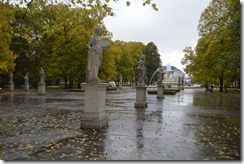
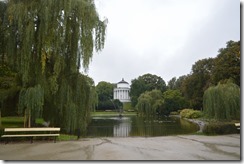
Old Town Warsaw
“I have seen many towns destroyed, but nowhere have I been faced with such destruction.†– General Dwight Eisenhower – 1945.
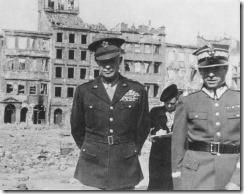
The story of Warsaw under Nazi occupation in World War II is a story of death and destruction. Warsaw had a population of 1.35 million with about 375,000 Jews at the time of 1939 Nazi invasion. The creation of the Warsaw Jewish ghetto in late 1940 imprisoned the city’s Jews in a space of 3.4 square km/1.3 sq. miles. Many more Jews were relocated to Warsaw from outlying areas resulting in over 400,000 Jews in Warsaw Ghetto. Nearly 100,000 died of starvation within the ghetto. In the summer of 1942 the Warsaw Ghetto was cleared with 250,000 remaining residents deported to Treblinka concentration camp.
In summer 1944, as the Russians approached Warsaw’s suburbs from the east and the Germans prepared their retreat west, the Warsaw Uprising commenced with an underequipped Polish Home Army mounting an offensive on the Nazi forces occupying the city. Initial military successes the first few days stalled as the Russians stopped their advance on the city and the Germans regrouped to suppress the Polish fighters.
The Warsaw Uprising lasted 63 days before the Polish Home Army capitulated. It is estimated as many as 200,000 civilians died in the Warsaw Uprising along with more than 25,000 soldiers. About 25,000 Germans died.
In reprisal for the Warsaw Uprising, the entire civilian population was expelled from the city and the Germans destroyed most of Warsaw’s remaining buildings. In the end, 85% of Warsaw was leveled.
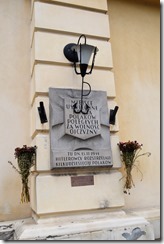
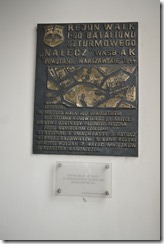
Â
Warsaw Old Town Reconstruction
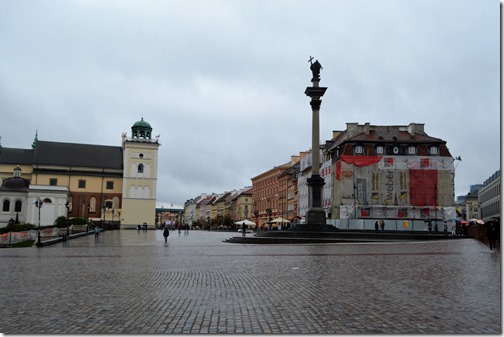
Warsaw Old Town is a story and picture of reconstruction. The tour guide said Warsaw Old Town is primarily for tourists. Prices are too expensive for locals.
During our walk, the majority of people on the streets were part of tour groups.
St. John the Baptist Archcathedral
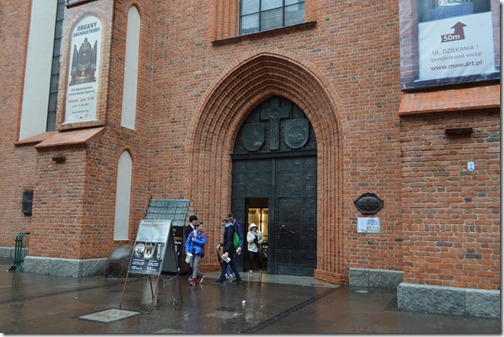
Children leaving St. John’s with collection boxes. I saw many of these children with boxes around Old Town soliciting for donations.
The post-war Communist government of Poland put millions of people to work rebuilding the cities destroyed by war. As a tourist in Poland today, many of the city center Old Town squares are post-war recreations from historic architectural plans or even reproductions based on period paintings and illustrations.
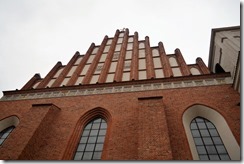
The facade of St. John’s Cathedral seemed rather plain to me. Many of the buildings in Old Town Warsaw did not appear to me to have the detail I saw in reconstructed buildings of Gdansk and Wroclaw.
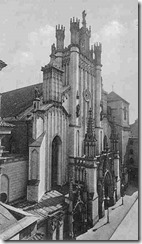
Poland’s Reconstruction
Wroclaw and Gdansk have Old Town squares, churches and cathedrals that appear to be centuries old architecturally. They are reproductions constructed within the last 70 years. In both these cities there is a noticeable difference between reconstruction of historic buildings and city squares and post-war construction for business and residential needs. The urgent need for housing in the post-war years limited the resources available for slow reproduction and reconstruction of historic sites.
Krakow is one major city of Poland where most of the Old Town architecture is authentically old. The Nazis maintained Krakow as the administrative capital of the General Government. The Germans retreated from Krakow before the Russians were forced to attack the city. Torun, Poland is another city known for its preserved Gothic architecture intact from the war and as birthplace of Copernicus.
One of the stories I heard in Wroclaw was how bricks from their destroyed buildings were sent to Warsaw for reconstruction, resulting in delays of many years for rebuilding their own historic churches and city center.
Warsaw Royal Castle – ‘People’s Palace’

The Royal Castle of Warsaw was rebuilt in the 1970s entirely from voluntary contributions. There was a bit of an ideological disconnect between a socialist government funded reconstruction of a landmark for Polish monarchy and identity.
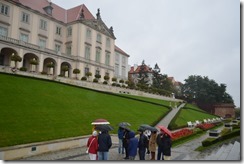
The Palace gardens are still under construction with the riverfront section scheduled to be completed in 2019.
Warsaw Old Town Square
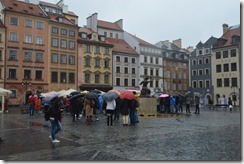
Four tour groups converged on Old Town Square at the same time. The link I included before for Free Walking Tours turned out not to be the tour I took. They are the yellow umbrellas. I was on the OrangeUmbrella tour.
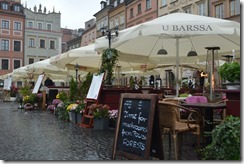
I found myself wishing I had taken the Alternative Warsaw tour to cross the river into Praga, an area on the eastern side of the Vistula River where many of the buildings survived the war. That tour was at Sigismund’s Column at the same time I joined the Old Town tour.
Perhaps it was the weather or the tour guide sharing his opinions of what not to do or see in Warsaw with the group, while stating he could provide recommendations to meet individual interests. His suggestion to me was be sure to visit Lazienki – Royal Residence Park, the #1 Warsaw attraction on TripAdvisor. I did not have that much time left to get to the park before I needed to leave for the airport.
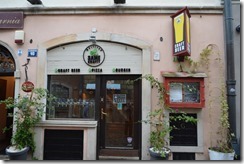
Almost ditched the tour for a beer in Old Town.
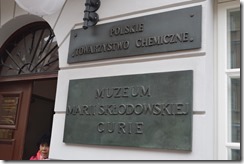
Marie Skłodowska Curie’s house and museum was one of the more interesting sites for me as someone who studied chemistry in university and worked a few years with radioactive isotope tracers in laboratory work. The first woman to win the Nobel Prize and only person to win the Nobel Prize in two fields of science. The tour guide gave a discouraging opinion of the museum.

And finally the end of my walking tour at the statue of ‘Little Insurrectionist’ – MaÅ‚y Powstaniec.
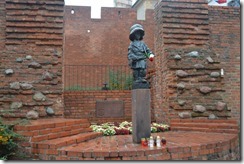
Walking back toward the Intercontinental Warsaw I came across Warsaw’s Tomb of the Unknown Soldier just as the sun broke through the clouds.
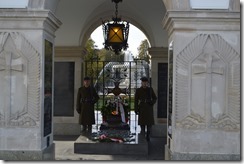
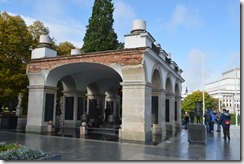
Poland FIFA World Cup 2018 Hopefuls
I started noticing crowds of people decked out in white and red clothing with many Poland flags waving about and the general chanting that signals exuberant fans in football match mode. The sidewalks around Warsaw Centralna train station were loaded with hawkers standing around boxes of Polish jerseys and trinkets.
A quick Google search confirmed there was a FIFA football match scheduled for 6pm in Warsaw stadium; Poland-Montenegro in a must-win match for Poland to qualify for World Cup 2018 in Russia.
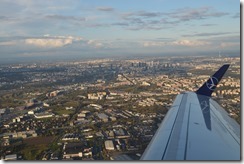
The weather had brightened considerably from the morning gray of Warsaw. My hopes were for a Poland win that afternoon, but to be honest, I just wanted to get out of Warsaw after 24 hours and focus on some place different. I will almost certainly be back to Warsaw, a little wiser on expectations for the city.
As for this trip, I was ready to dump my rain gear for shorts and sandals and some warmer sunshine on the French Riviera/Cote d’Azur.
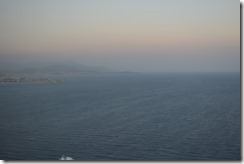
Â
Â
Â


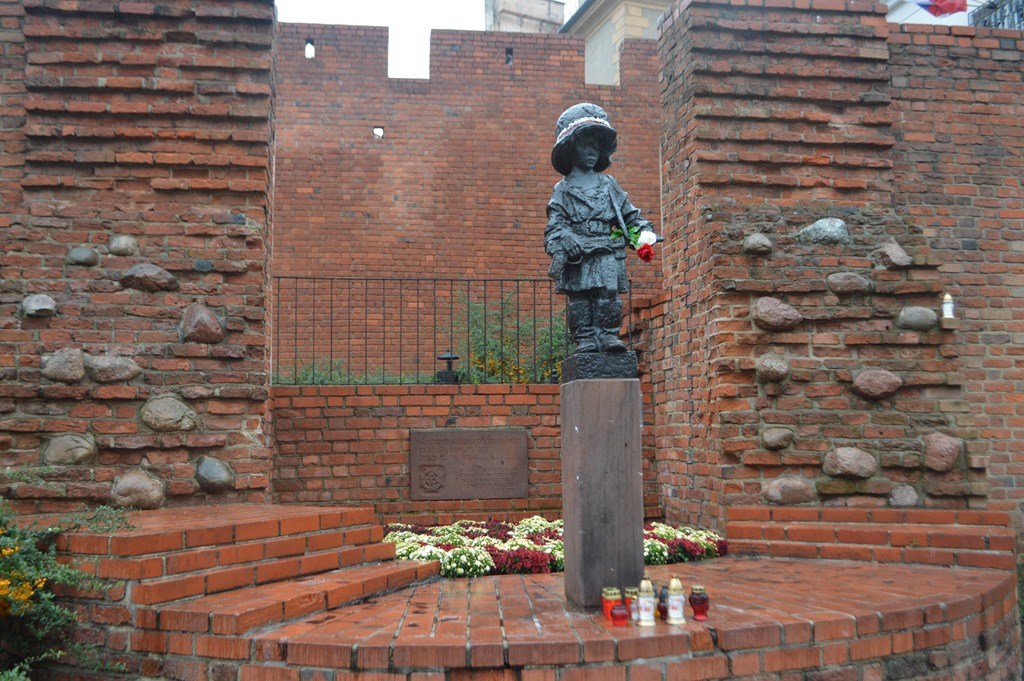

3 Comments
Comments are closed.